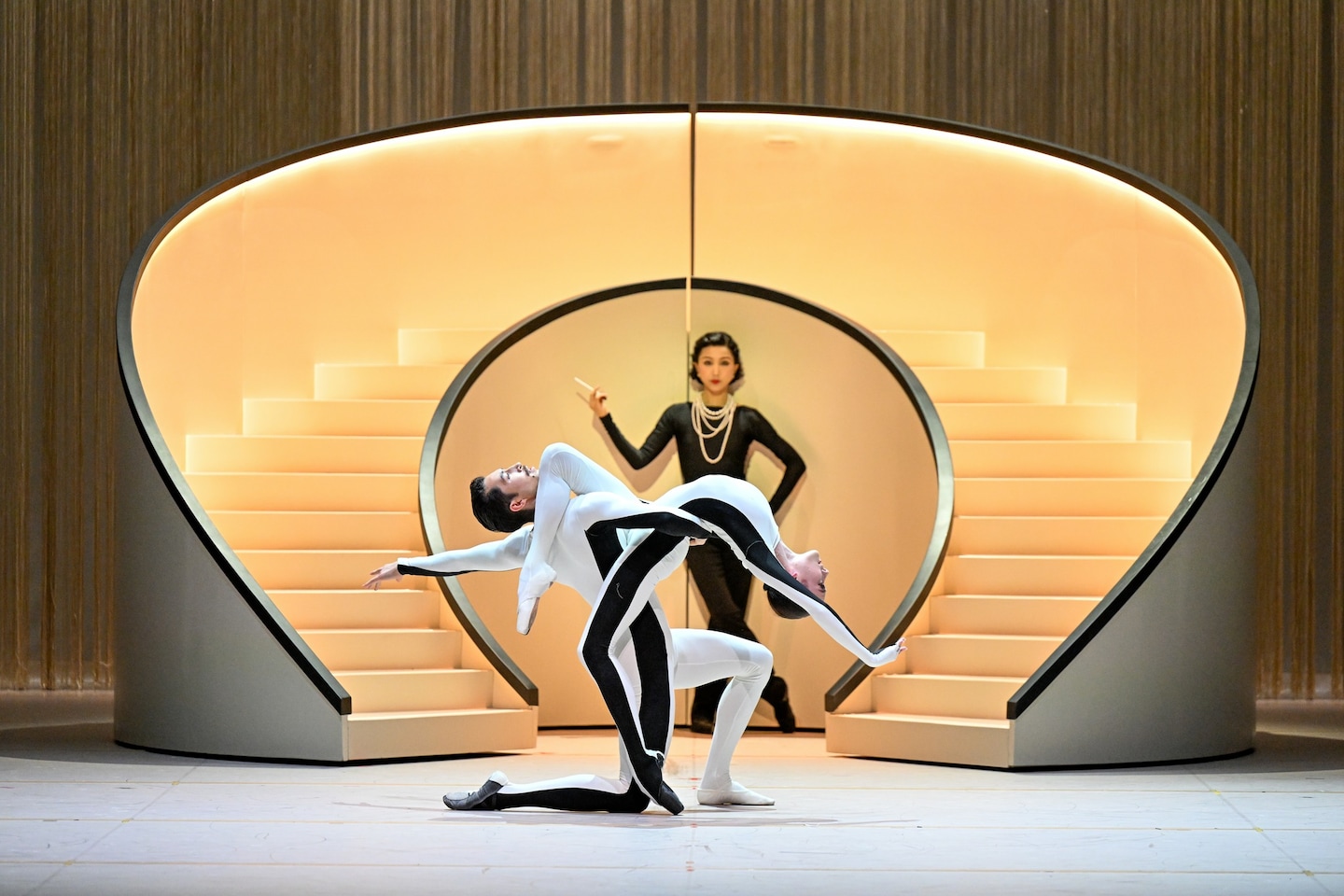The iconic Chanel emblem is widely recognized across the globe, embellishing various items such as jewelry, handbags, and cosmetics. Recently, this symbol has even transcended into the realm of choreography.
As part of the production “Coco Chanel: The Life of a Fashion Icon,” premiering at Atlanta Ballet until February 17, a dance segment featuring dancers embodying the famous interlocking C’s has been incorporated. This choreographic choice by the acclaimed choreographer Annabelle Lopez Ochoa serves as a reflection of the enduring and intricate legacy of her focal point, the renowned French designer Gabrielle “Coco” Chanel.
The narrative unfolds the story of a determined woman whose journey from poverty to prosperity (1883-1971) showcased remarkable success in a male-dominated business sphere. The ballet not only resonates with feminist themes but also highlights Chanel’s revolutionary impact on fashion by introducing practicality, freedom, and comfort, liberating women from the constraints of corsets. However, portraying the couturier through dance presents a challenge due to her well-known anti-Semitic views and collaboration with the Nazis.
Ochoa emphasizes the importance of shedding light on this dark aspect of Chanel’s history within the performance. By delving into such complexities, the ballet sparks interpretations, encourages further research, and fosters meaningful conversations—an embodiment of art’s profound purpose, as articulated by Gennadi Nedvigin, the artistic director of Atlanta Ballet.
The genesis of the show can be traced back to Ochoa’s collaboration with Septime Webre, the artistic director of Hong Kong Ballet. Inspired by Ochoa’s distinctive choreographic style honed over the years, Webre sought to partner with her, leading to the inception of this ballet centered around Chanel. Ochoa, known for her works portraying resilient and multifaceted women like Eva Perón, Frida Kahlo, and Maria Callas, finds intrigue in exploring the motivations and vulnerabilities of such individuals who faced harsh judgments.
Chanel’s life story has been a wellspring of inspiration for various art forms, from movies to musicals, reflecting her swift rise from destitution, including her innovative contributions to fashion that endure to this day. The enduring legacy of Chanel’s designs, marked by simplicity and functionality, continues to influence contemporary fashion trends significantly.
The ballet not only captures Chanel’s sartorial legacy but also delves into her personal life, including her involvement in designing ballet costumes and her relationships with prominent figures of her time. Through a meticulous blend of narrative and choreography, Ochoa and her artistic collaborator Nancy Meckler bring Chanel’s journey to life on stage, accompanied by an original score by Peter Salem.
In a nuanced portrayal, the ballet introduces a symbolic character, the Shadow-Chanel, embodying her ambition, determination, and opportunism. This artistic choice adds depth to the narrative, exploring the complexities of Chanel’s character, including her controversial romantic liaison with a Nazi officer during World War II and her exploitative actions towards a Jewish family during the war.
Atlanta Ballet’s proactive approach to acknowledging and contextualizing the contentious aspects of Chanel’s legacy underscores the production’s commitment to presenting a comprehensive narrative. By collaborating with institutions like the William Breman Jewish Heritage Museum, the ballet seeks to engage in critical discussions surrounding Chanel’s complex history.
Webre underscores the significance of the ballet’s portrayal of gender dynamics, offering a refreshing perspective compared to traditional ballet narratives that often depict women in stereotypical roles. Through the lens of Coco Chanel, a multifaceted and flawed yet independent woman, the ballet challenges conventional notions of femininity prevalent in classical ballet repertoire.
For Ochoa, the essence of ballet lies in portraying authentic stories of real women rather than fairy tales, encapsulating the complexities and nuances of their lived experiences.
